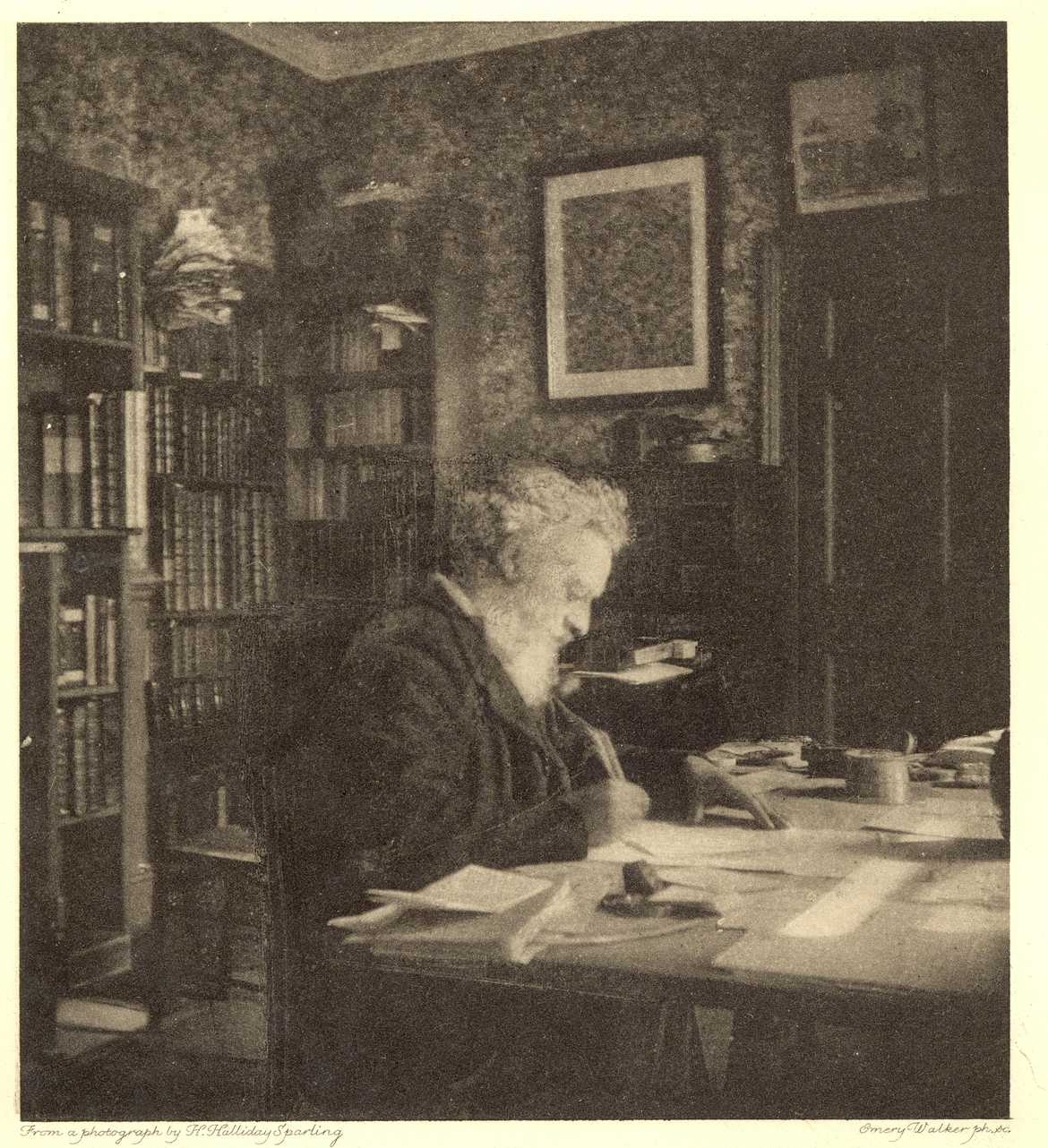About the author...
Carien Kremer is Curator at The William Morris Gallery - childhood home of the iconic designer, poet and activist.
William Morris was a designer, poet, craftsman, activist and radical socialist. He was born in Walthamstow, north-east London, in 1834. The William Morris Gallery is based in his childhood home and tells the story of his life, work and legacy.
Morris was the eldest son from a wealthy family, and had a conventional middle class upbringing. Just before his fourteenth birthday he went to boarding school at Marlborough College. In his earliest surviving letter, he wrote to his sister Emma in Walthamstow: 'I am sure you must think me a great fool to be always thinking about home, but I really can't help it. I don't think it is my fault for there are such a lot of things I want to do and say, and see.'

William Morris at Kelmscott House

William Morris’s bedroom at Kelmscott Manor, watercolour by Mary Sloane
What do we know about the house in Morris's lifetime? The three storey Georgian villa with stable, kitchen gardens and pleasure ground comprising eight acres, was actually a step down for the family. They had been living in a much grander house in Woodford when Morris's father died, and to downsize his mother moved back to Walthamstow. But it would have been an idyllic place to grow up. The extensive gardens included a medieval moat, where Morris and his brothers would go fishing. The grand staircase with its deep window boxes was a favourite place to sit and read.

Interior of the William Morris Gallery, London Borough of Waltham Forest
Starting with his childhood in Walthamstow, the thematic displays explain his reasons for becoming an artist, and the story of 'the Firm'. Morris Marshall Faulkner and Co, which later became Morris & Co, produced wallpapers - such as the daisy design illustrated below - printed and woven textiles, tapestry, embroideries, carpets, tiles, stained glass and furniture. The displays explore the radical ideas behind the designs, as well as the extraordinary lengths Morris went to ensure the quality of his products. The collection enables us to trace his process; from working drawings, scaled cartoons, tools and printing blocks to the final products and the stories of those who bought them.
But there was more to Morris than design. In his own time he was best known as a poet and writer. He loved medieval literature and travelled to Iceland to visit the saga sites. Frustrated with the poor quality of mass produced goods, he set up his own printing press to make beautiful books. Always concerned with creating a better world, Morris 'crossed the river of fire' and became a radical socialist when he was nearly 50. He focused his tremendous energies on helping to create a free and fair world where all people are equal. He also fought for preservation of heritage and the environment.

Daisy wallpaper, designed by William Morris
Today the William Morris Gallery is the only public museum devoted to his work and its collection is internationally renowned. A busy exhibition, events and education programme explores how Morris's concerns and actions relate to issues society faces today. For more information on our programme and collections please visit our website.
Carien Kremer is Curator at The William Morris Gallery - childhood home of the iconic designer, poet and activist.